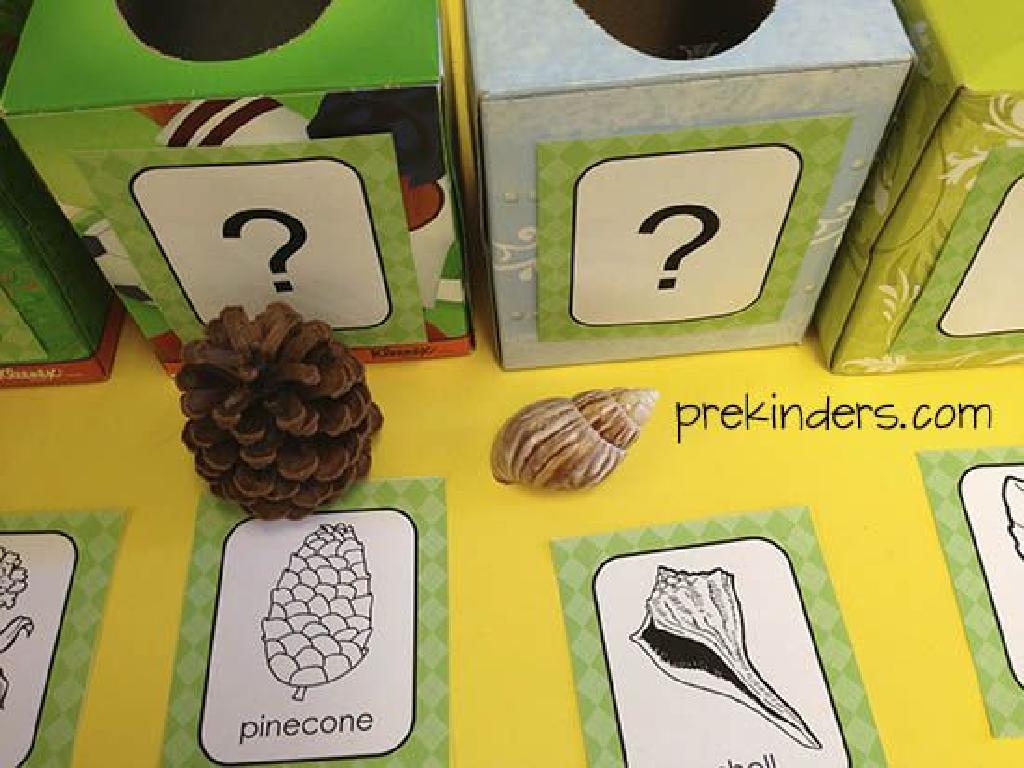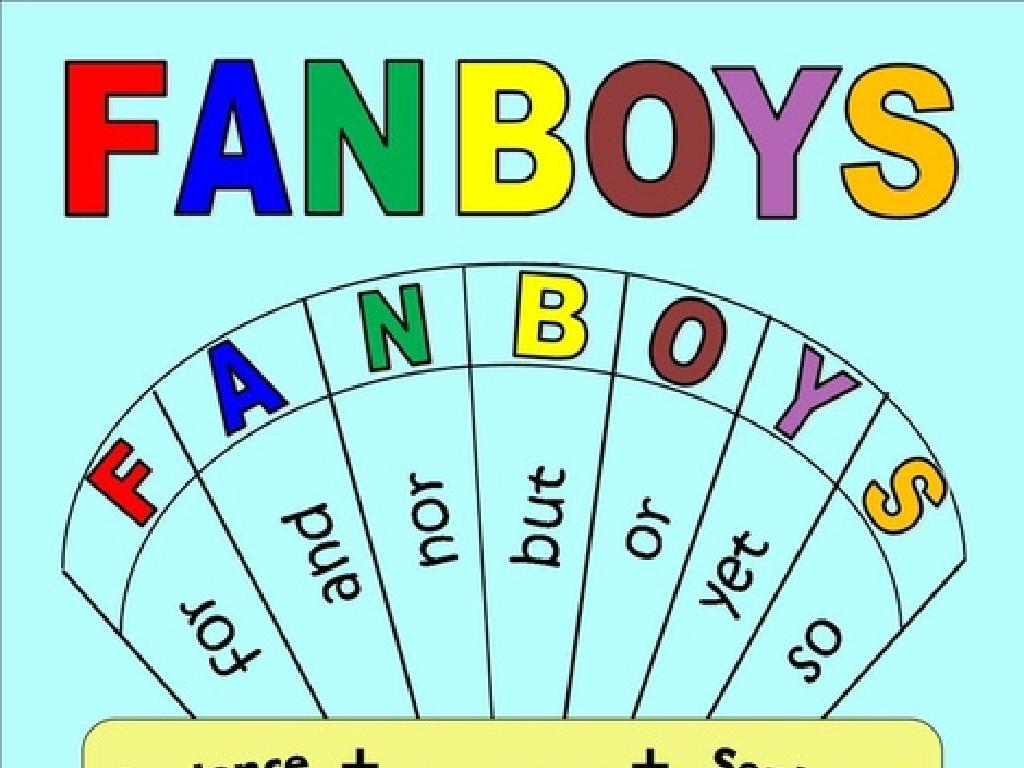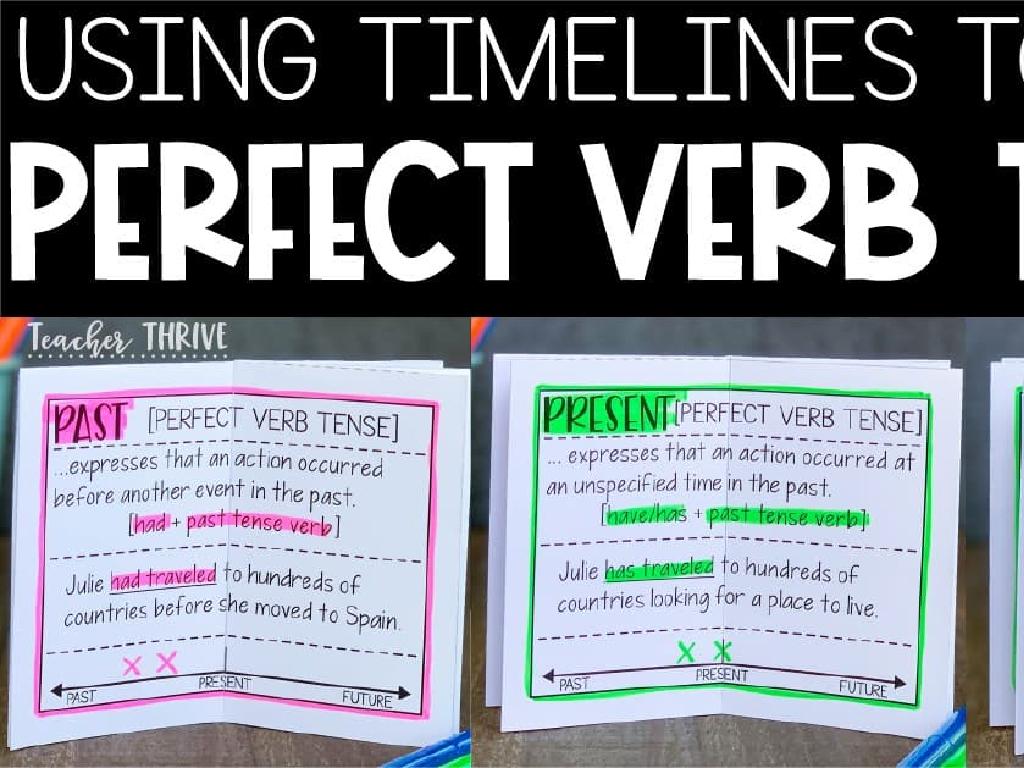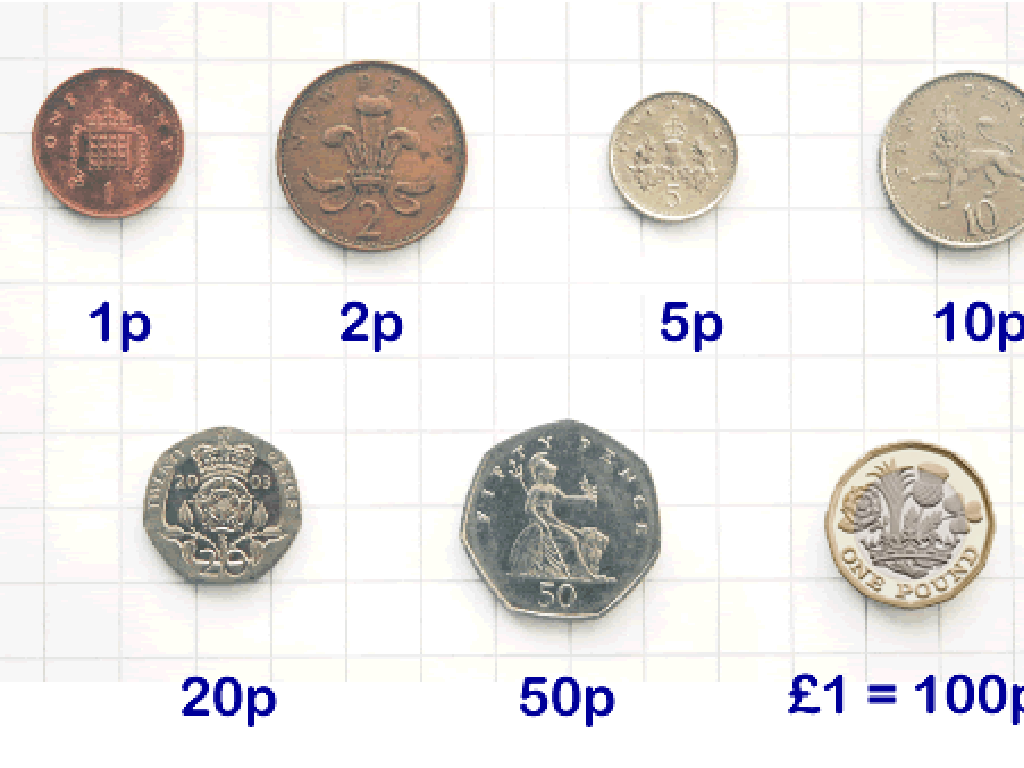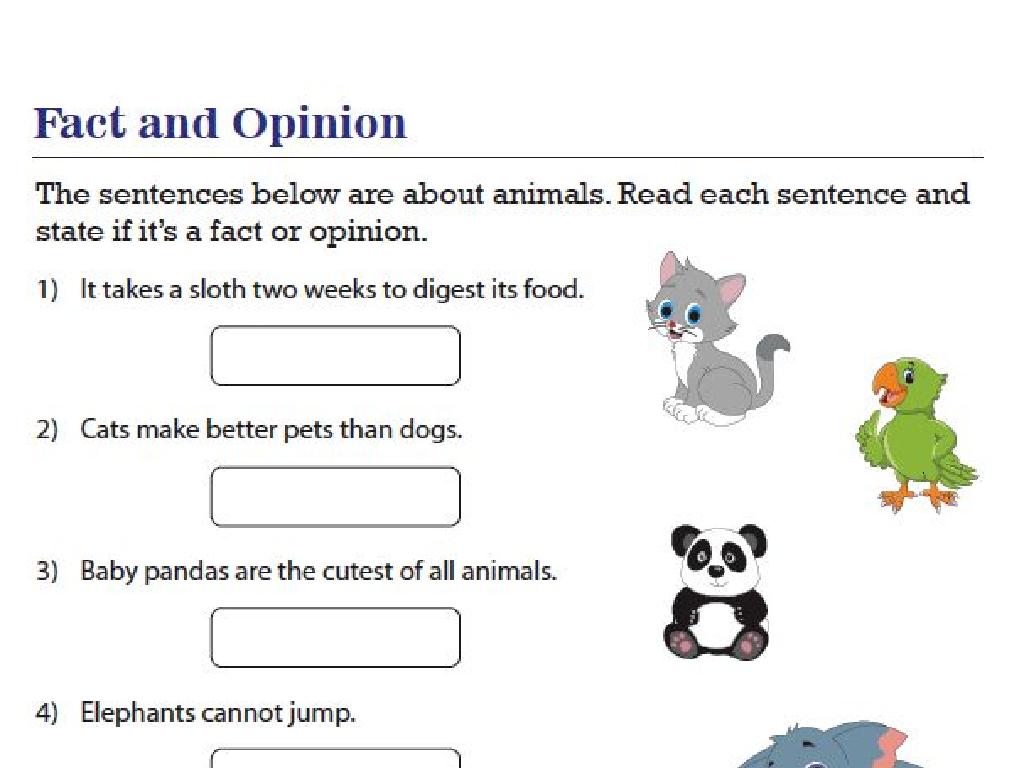Compound Subjects And Objects With "I" And "Me"
Subject: Language arts
Grade: Seventh grade
Topic: Pronoun Types
Please LOG IN to download the presentation. Access is available to registered users only.
View More Content
Compound Subjects and Objects with ‘I’ and ‘me’
– Pronouns replace nouns
– ‘I’ for subjects, ‘me’ for objects
– Use ‘I’ when it’s doing the action, ‘me’ when it’s receiving action
– Correct pronoun usage matters
– Avoids confusion, shows respect for language rules
– Examples: ‘I’ and ‘me’ in sentences
– ‘I’ joined the team. Pass the ball to ‘me’.
|
Today’s lesson focuses on understanding the role of pronouns, particularly ‘I’ and ‘me’, in sentences. Pronouns are used to replace nouns and avoid repetition. It’s crucial for students to learn the difference between subjects and objects to use ‘I’ and ‘me’ correctly. ‘I’ is used when the pronoun is the subject of the verb, while ‘me’ is used when the pronoun is the object of the verb or the object of a preposition. Proper usage is important for clarity in communication and to maintain grammatical standards. Provide examples and encourage students to create sentences using ‘I’ and ‘me’ correctly to reinforce the concept.
Pronouns: Simplifying Language
– Pronouns take place of nouns
– Pronouns prevent us from repeating the same nouns over and over.
– Examples: I, me, he, she, it
– ‘I’ is used as the subject; ‘me’ is used as the object.
– Avoid repetition with pronouns
– Using pronouns makes sentences less cumbersome and more varied.
– Focus: ‘I’ and ‘me’ usage
– Understand when to use ‘I’ or ‘me’ in compound structures.
|
Begin with a quick review of pronouns and their function to replace nouns, thus avoiding repetition and making sentences clearer and less repetitive. Provide examples of pronouns, emphasizing ‘I’ and ‘me’ as the focus for today’s lesson. Explain that ‘I’ is used when the pronoun is the subject of the sentence (the one doing the action), while ‘me’ is used when the pronoun is the object (the one receiving the action). Use examples to illustrate proper usage, especially in compound subjects and objects, to ensure students can identify and use ‘I’ and ‘me’ correctly in their writing.
Singular vs. Compound Subjects
– Singular subject pronoun use
– A singular subject uses ‘I’, ‘he’, ‘she’.
– Forming compound subjects
– Combine two subjects with ‘and’, like ‘John and I’.
– Using ‘I’ in compound subjects
– Use ‘I’ when you’re one of the subjects doing the action.
– Examples of ‘I’ in sentences
– ‘John and I went to the store.’ ‘You and I will do the project.’
|
This slide introduces the concept of singular and compound subjects, focusing on the use of ‘I’ in compound subjects. Start by explaining that a singular subject involves just one person or thing and uses singular pronouns. Then, describe how a compound subject includes two or more people or things, often connected by ‘and’. Emphasize that ‘I’ is used in a compound subject when the speaker is included in the action. Provide examples and encourage students to create their own sentences using ‘I’ in compound subjects. This will help them understand the difference between singular and compound subjects and the correct use of ‘I’.
Compound Subjects with ‘I’
– Use ‘I’ in the subject
– ‘I’ is used when you’re doing the action.
– Example: My friend and I
– ‘My friend and I went to the library.’
– ‘I’ is listed last
– Say ‘my sister, my brother, and I’, not ‘I, my sister, and my brother’.
|
This slide focuses on the correct usage of the pronoun ‘I’ in compound subjects. Emphasize that ‘I’ is used when the speaker is part of the subject performing the action. Provide the example ‘My friend and I went to the library’ to illustrate this point. Highlight the etiquette rule that ‘I’ should be placed last when listed with other subjects. This is a convention in English that shows politeness by putting others before oneself. Encourage students to practice creating sentences with compound subjects including ‘I’ and to be mindful of its position in the sequence.
Singular vs. Compound Objects
– Singular object pronoun use
– Refers to one person: ‘me’, ‘him’, ‘her’
– Forming compound objects
– Joins two or more nouns/pronouns: ‘John and me’
– Using ‘me’ in compound objects
– ‘Me’ follows action towards the speaker and others: ‘The gift is for my friend and me’
– Examples of ‘me’ in sentences
– ‘Mom baked cookies for my brother and me’
|
This slide aims to clarify the difference between singular and compound objects, focusing on the correct use of ‘me’. A singular object uses a singular pronoun to refer to one person, while a compound object combines two or more nouns or pronouns. It’s crucial for students to understand that ‘me’ is used in a compound object when the action is directed towards the speaker and another person. Provide examples and encourage students to create sentences using both singular and compound objects with ‘me’ to reinforce their understanding. This will help them grasp how to correctly structure sentences in both spoken and written English.
Compound Objects with ‘Me’
– ‘Me’ in compound objects
– Use ‘me’ when it’s the object of a verb or preposition.
– Example: Teacher’s question to us
– ‘The teacher asked my friend and me a question.’
– Rule: ‘Me’ position in list
– ‘Me’ can be first or last: ‘me and my sister’ or ‘my brother and me’.
– Practice using ‘me’ correctly
|
This slide focuses on the correct usage of ‘me’ in compound objects. It’s crucial for students to understand that ‘me’ is used when the pronoun is part of the object, not the subject. Provide the example where a teacher directs a question to a student and their friend, highlighting the object position of ‘me’. Emphasize that ‘me’ can be used anywhere in the list of a compound object. To reinforce this lesson, have students practice creating sentences with compound objects that include ‘me’, ensuring they understand its flexible placement within the list.
Let’s Practice: Compound Subjects and Objects
– Identify compound subjects and objects
– Find pairs of nouns or pronouns joined by ‘and’ or ‘or’ that serve as the subject or object in a sentence.
– Create sentences with compound elements
– Use ‘I’ and ‘me’ with another noun or pronoun to make a compound subject or object.
– Exchange sentences with a peer
– Share your sentences with a classmate to see if they can identify the compound parts.
– Review and discuss each other’s sentences
– Provide constructive feedback on the use of compound subjects and objects in your classmate’s sentences.
|
This slide is for a class activity focused on understanding and using compound subjects and objects with ‘I’ and ‘me’. Students will first identify compound subjects and objects in provided sentences. Then, they will create their own sentences using ‘I’ and ‘me’ in compound structures. Afterward, they will exchange their sentences with a classmate for peer review. Encourage students to provide constructive feedback. Possible activities include identifying compound elements in a text, creating a short story with compound subjects and objects, and peer reviewing sentences from a worksheet. The goal is to reinforce the lesson through practice and collaboration.
Common Mistakes: ‘I’ vs. ‘Me’
– ‘I’ vs. ‘me’: Understanding the difference
– ‘I’ is used when the person speaking is doing the action, ‘me’ is used when they receive the action.
– Use ‘I’ for subjects, ‘me’ for objects
– For example, ‘Sara and I went to the store’ not ‘Sara and me went to the store’.
– Common errors and corrections
– Incorrect: ‘Me and him went running.’ Correct: ‘He and I went running.’
– Practice makes perfect
|
This slide aims to clarify the proper usage of ‘I’ and ‘me’ in sentences, which is a common area of confusion for students. ‘I’ is used as the subject of a verb (the one doing the action), while ‘me’ is used as the object (the one receiving the action). Provide clear examples of incorrect sentences and their corrected forms to illustrate the point. Encourage students to practice by creating sentences and identifying whether ‘I’ or ‘me’ should be used. This practice will help solidify their understanding and help them avoid these common mistakes in their writing.
Class Activity: Pronoun Relay Race
– Split into teams for the relay
– Write sentences with compound subjects or objects
– Use ‘I’ or ‘me’ in compound structures correctly
– Teammates correct the sentences
– Pass the baton: next person checks and corrects
– First team with all correct sentences wins!
|
This activity is designed to reinforce the correct use of compound subjects and objects with ‘I’ and ‘me’. Divide the class into small teams and have them line up. Each team will take turns writing sentences on the board that include either a compound subject or object. The following team member must check the sentence and make any necessary corrections regarding the use of ‘I’ and ‘me’. The activity continues in a relay format until all team members have participated. The first team to finish with all sentences correctly written wins. This exercise encourages collaboration, peer review, and reinforces the lesson in a fun, competitive manner. Possible sentences for correction could include common mistakes like ‘Me and him went to the store’ or ‘She gave the cookies to I and my sister’.
Wrapping Up: ‘I’ and ‘Me’ in Compound Structures
– Review: Compound subjects & objects
– Homework: Craft 10 sentences
– Use ‘I’ and ‘me’ with another noun or pronoun
– Include ‘I’ and ‘me’ correctly
– Example: ‘My brother and I went to the store.’
– Upcoming quiz: Study pronouns
|
As we conclude today’s lesson, ensure students have grasped the concept of using ‘I’ and ‘me’ in compound subjects and objects. For homework, they should write 10 original sentences, applying what they’ve learned. This will help reinforce their understanding and prepare them for the upcoming quiz on pronouns. During the next class, we’ll have a quick review before the quiz to address any lingering questions. Encourage students to study the different types of pronouns and their correct usage in sentences.

